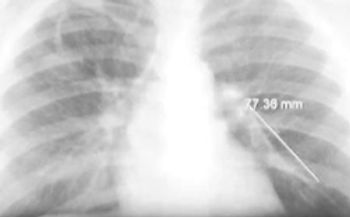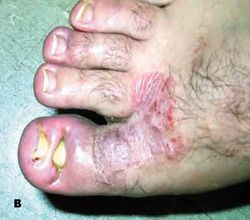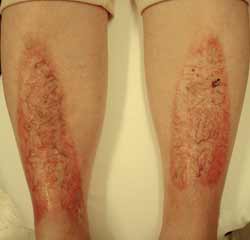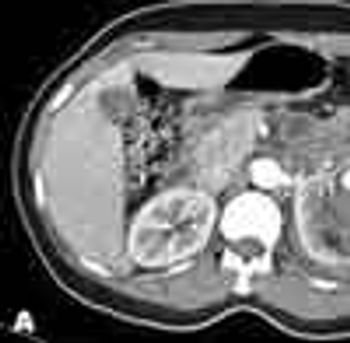
A 50-year-old woman with breast cancer presented for follow-up 2 months after undergoing a left mastectomy and chemotherapy through a port catheter implanted in the right subclavian vein. Because venous access had been difficult to achieve, the catheter was left in situ after treatment.



















































































































































































































































































